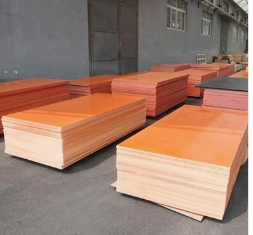- 22
- Nov
The development history of epoxy glass fiber drawing rod may wish to take a look at these.
The development history of epoxy glass fiber drawing rod may wish to take a look at these.

Epoxy glass fiber drawing rod is made of high-strength aramid fiber and glass fiber impregnated with epoxy resin matrix by high temperature pultrusion. It has the characteristics of super high strength, excellent wear resistance, acid and alkali resistance, corrosion resistance and other excellent high temperature resistance. Products are suitable for electrolytic aluminum plants, steel plants, high-temperature metallurgical equipment, UHV electrical equipment, aerospace fields, transformers, capacitors, reactors, high-voltage switches and other high-voltage electrical appliances.
As early as 1872, the German chemist A.Bayer first discovered that phenol and formaldehyde can quickly form reddish-brown lumps or viscous materials when heated under acidic conditions, but the experiment was stopped because they could not be purified by classical methods. After the 20th century, phenol has been obtained in large quantities from coal tar, and formaldehyde is also produced in large quantities as a preservative. Therefore, the reaction product of the two is more attractive. It is hoped that useful products can be developed, although many people have spent a lot of labor on it. , But none of them achieved the expected results.
In 1904, Baekeland and his assistants also carried out this research. The initial purpose was to make insulating varnish instead of natural resin. After three years of hard work, finally in the summer of 1907, not only insulating varnish was produced. And also produced a real synthetic plastic material-Bakelite, it is well-known “bakelite”, “bakelite” or phenolic resin.
Once Bakelite came out, manufacturers soon discovered that it can not only make a variety of electrical insulation products, but also make daily necessities. Edison (T. Edison) used to make records, and soon announced in the advertisement: It has made thousands of products with Bakelite. Such products, so the invention of Baekeland was hailed as the “alchemy” of the 20th century.
German chemist Beyer also made great contributions to the application of bakelite.
One day in 1905, German chemist Beyer did an experiment on phenol and formaldehyde in a flask, and found that a sticky substance had formed in it. He washed it with water and couldn’t wash it off. Instead, he used gasoline, alcohol and other organic chemicals. Solvent, it still doesn’t work. This made Beyere’s brains awkward. Later, he tried his best to get this “annoying” thing off. Beyere breathed a sigh of relief and threw it in the waste bin. inside.
A few days later, Beyere was about to dump the contents of the waste bin. At this moment, he saw the piece again. The surface was smooth and shiny, with an attractive luster. Beyere took it out curiously. After getting grilled on the fire, it no longer softened, fell to the ground, it did not break, saw it with a saw, it was sawed smoothly, and the keen Beyer immediately thought that this might be a kind of Very good new material.
